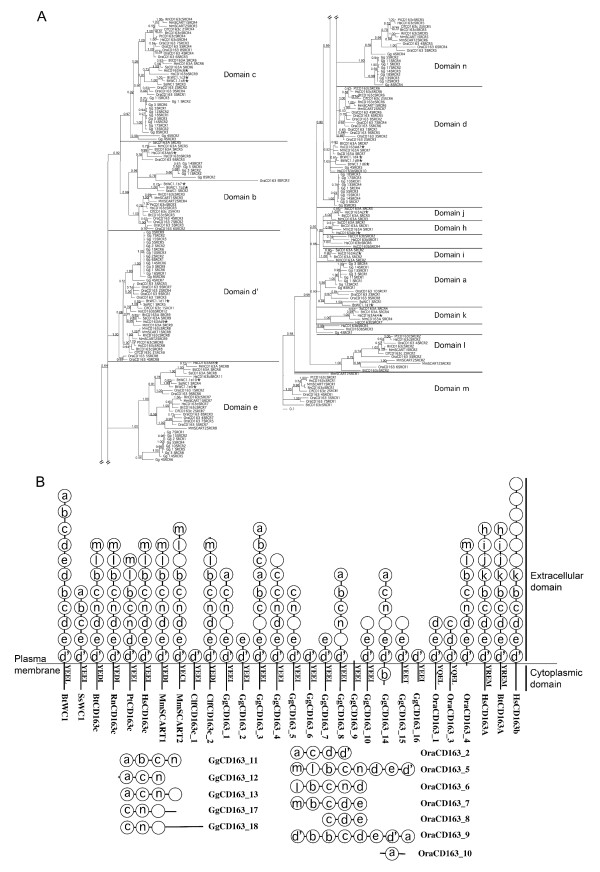Figure 4.
CD163 family member SRCR domain organization and cytoplasmic tyrosine-based motifs. >(A) CD163 family members from multiple species were identified by BLAST searches with bovine WC1, CD163A and CD163c-α SRCR and cytoplasmic domains. The evolutionary history of 242 taxa was inferred, using MrBayes3.2 to approximate the posterior probabilities of trees, shown at branch nodes [65]. SRCR domains clustering in a clade with pre-defined SRCR domains (asterisks) were identified and SRCR domains clustered together, but not in association with known SRCR domains, were assigned a new letter designation [1]. Rattus norvegicus (Rn) CD163c-α, Pan troglodytes (Pt) CD163c-α, Canis lupus familiaris (Clf) CD163c_1 and ClfCD163c_2, Gallus gallus (Gg) CD163_1 through GgCD163_18, and Ornithorhynchus anatinus (Ora) CD163_1 through OraCD163_10 are predicted from genomic sequence; Bos taurus (Bt) WC1, Sus scrofa (Ss) WC1, Homo sapiens (Hs) CD163c-α (partial cDNA, corrected from genomic sequence), Mus musculus (Mm) SCART1, MmSCART2, HsCD163A and HsCD163b cDNA have been isolated. (B) Summary of CD163 family member SRCR domain organization and cytoplasmic tyrosine based motifs. SRCR domain assignments were made as shown in Fig. 4A, with confirmation by analysis utilizing the Neighbor-Joining algorithm with the JTT model (data not shown). CD163 family members with transmembrane domains are shown with the plasma membrane and location of the transmembrane domains represented by the horizontal line. Tyrosine-based signalling motifs similar to that found in BtWC1 are shown [35]. CD163 family members without transmembrane domains are shown horizontally, with the N-terminus on the left.

